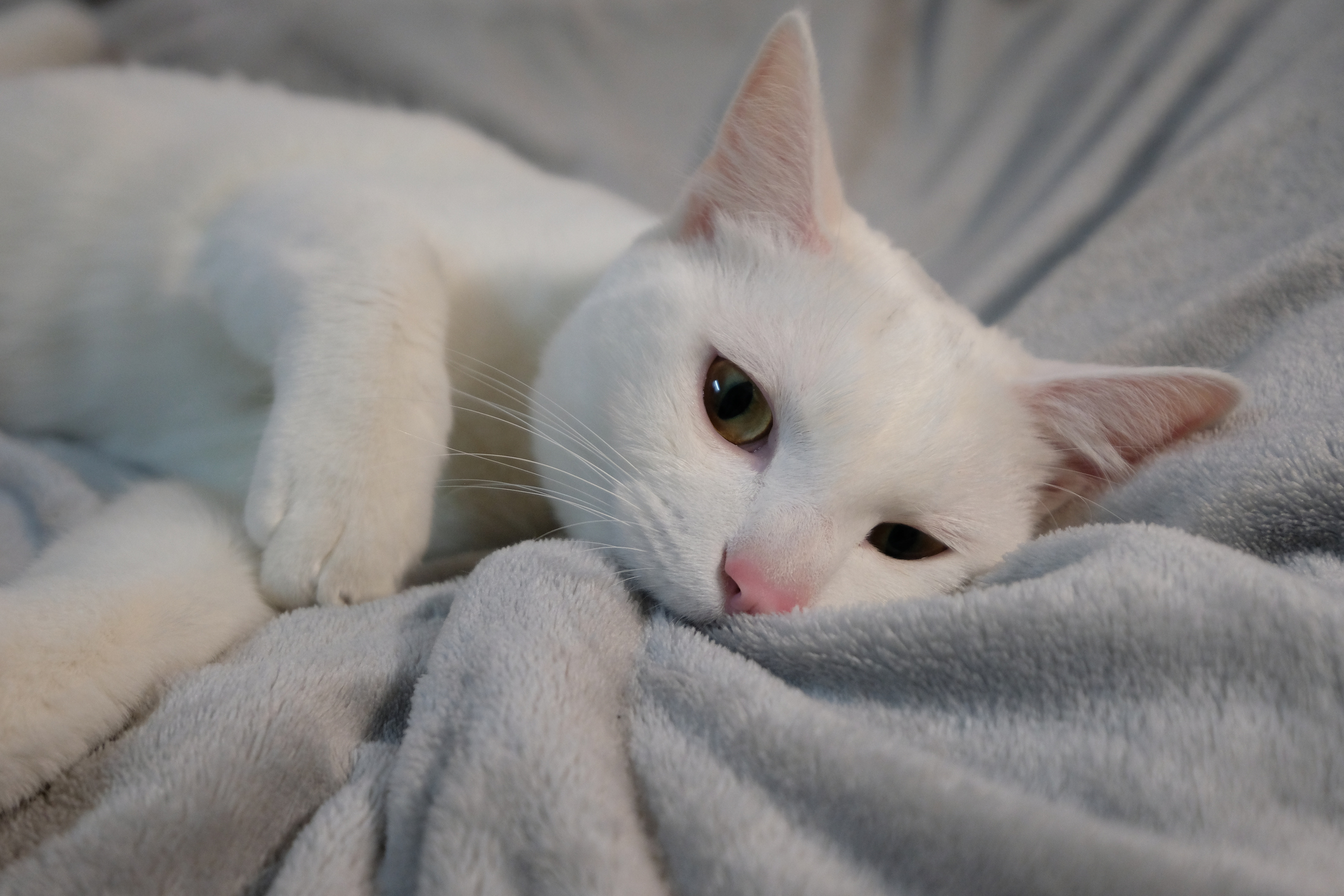
Why the Heck is My Cat Eating Non-Food Items?
Cats aren’t quite like dogs, who seem to have the urge to put anything and everything into their mouths. This is why it’s so bizarre to see a cat attempting to eat things that aren’t remotely close to food. As it turns out, the urge to eat non-food items stems from a condition called pica.
Feline pica is relatively common, particularly in young cats. The condition causes cats to seek out and ingest things that aren’t food. Your kitty might decide that grass or weeds in the backyard look appetizing or that they just have to taste the sleeve of your favorite sweater. They might even be drawn to other items, such as small rocks or gravel, yarn, cardboard or any debris laying around your house.
Unfortunately, pica is a dangerous condition for cats to have. Obviously, eating items that aren’t food isn’t good for our furry friends. These items could make their stomach upset, leading to vomiting and diarrhea. Even worse, they could cause intestinal obstructions that require surgery to rectify. Keeping a close eye on your cat and seeking veterinary help if you suspect pica are the best ways to find a solution to your cat’s strange problem.
Underlying sources of pica
Pica infamously causes a range of negative symptoms for cats, including gastrointestinal illness, constipation, blockages, lethargy and more. Despite these negative effects, however, cats with pica can’t seem to stop themselves from eating everything in sight!
Pica isn’t caused by one thing in particular. Experts believe that a range of urges or underlying problems may lead to a cat developing pica—many of which are psychological in nature.
- Self-soothing behavior: Young cats may develop pica at a young age as a coping mechanism for stress or uncertainty in their environment. Some kittens may associate things like sucking on a blanket (and later ingesting it) with nursing from their mothers, which is a calming experience. Thus, they could continue this pattern of behavior over time, ingesting non-food items to self-soothe.
- Entertaining behavior: Other cats may develop the habit of eating non-food items out of boredom. Finding things to eat may be a source of entertainment for your cat. It’s also possible that they eat non-food items because it draws your attention, providing a type of “reward” for the behavior.
- Nutritional or GI problems: Another common reason that cats develop pica is due to nutritional deficiencies. These might stem from being fed food that lacks the proper nutritional makeup for their life stage or from having an underlying medical issue that denies the body of its normal nutritional intake. Things like intestinal parasites, inflammatory bowel disease (IBD), diabetes and thyroid disorders could drive your cat to seek nutrition anywhere they can—including non-food items.
In order to determine what is causing your cat to ingest non-food items, you’ll need to take them to the vet for a full examination. Your vet will likely test for any underlying medical problems to rule those out before determining whether your cat’s pica is behavioral or not.
The right form of treatment for your cat will depend on the underlying cause. Medical problems like hyperthyroidism or IBD can usually be addressed with medications. Treating these issues should help alleviate the symptoms of pica your cat was experiencing.

Managing behavioral pica in cats
Unfortunately, if your cat’s pica is suspected to be linked to a behavioral problem, you won’t be able to give your kitty a medication to fix it. Instead, you’ll need to find productive ways to manage your cat’s condition and minimize their non-food eating habits as much as possible.
One of the first places to start is identifying the items your cat likes to suck or chew on and eat the most, then remove those from your cat’s environment. For example, if you cat likes gnawing on socks left on your bedroom floor, you’ll want to make a point to keep all socks and other clothes in the closet or hamper, away from your kitty’s clutches.
It’s also a good idea to do a general tidying up around your home regularly. Clear away any items that are small enough for your cat to fit in their mouth so they don’t try to eat them and make sure all debris is picked up.
Then, you’ll want to focus on fulfilling the need your cat attempts to fill through pica. If you suspect your cat is stressed, find ways to minimize their stress in the home. Herbal calming supplements, a new hideaway to relax in and some minor adjustments can go a long way in reducing stress. If your cat is bored, find new ways to enrich them every day, such as 30 minutes of one-on-one playtime, a new cat tree or new toys.
You might even provide safe chewing alternatives to give your cat the sensation of chewing on things without the danger. Catnip plants and pet-safe chew toys might be a suitable and entertaining alternative.
Most importantly, keep a close eye on your cat and redirect their attention if you notice them trying to eat something that isn’t food. Hopefully, with the right combination of environmental changes and stimuli, your kitty will curb their bad habit and stick to cat food and treats.


